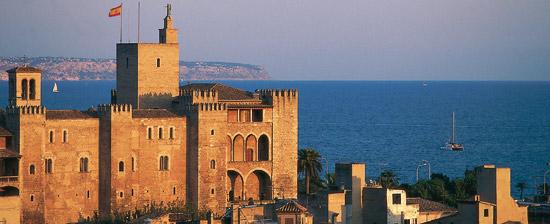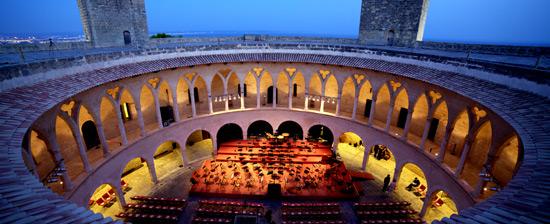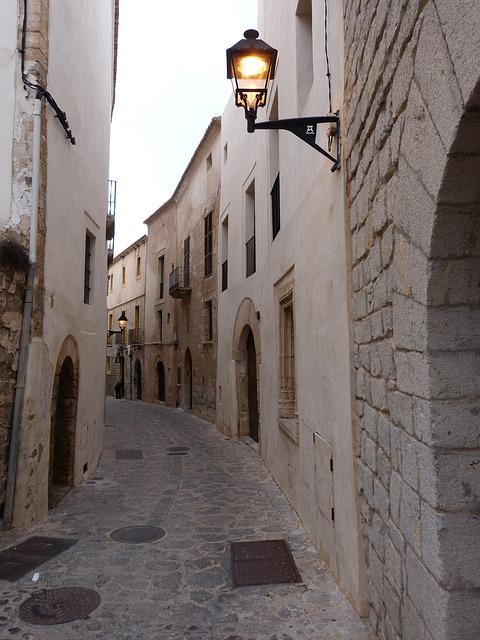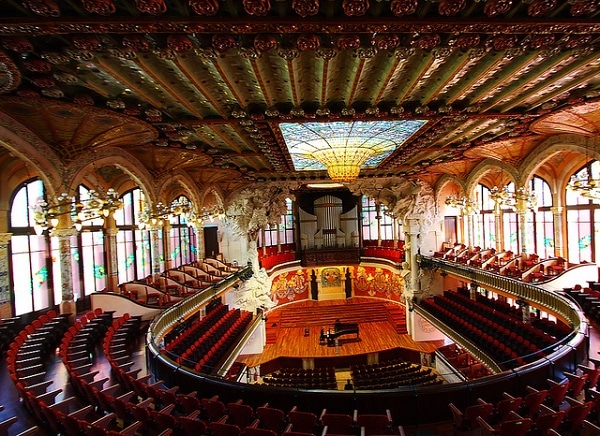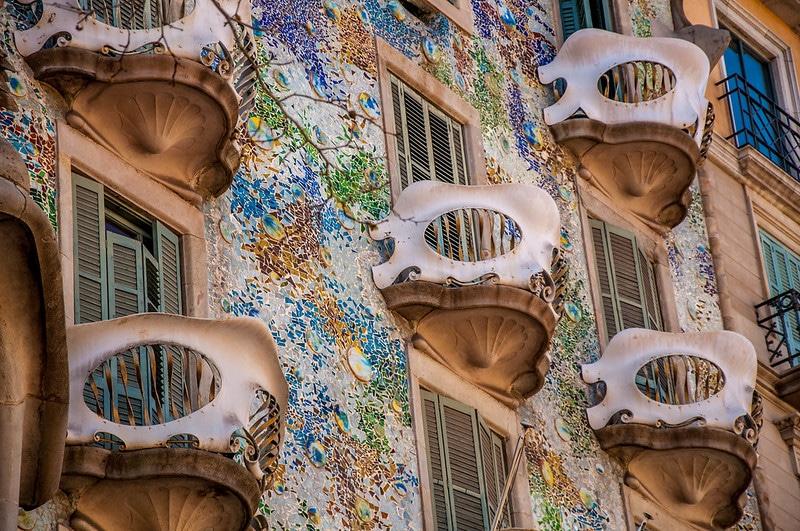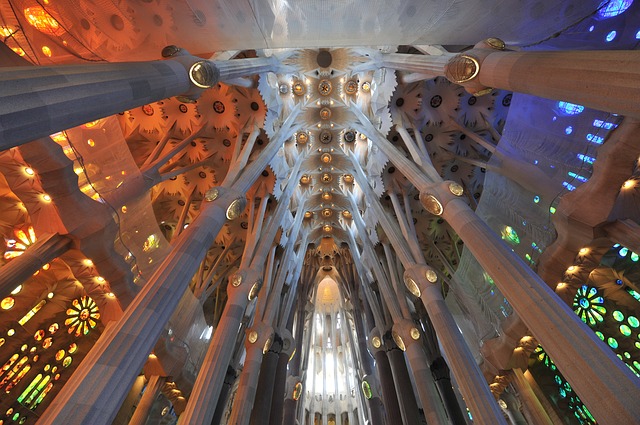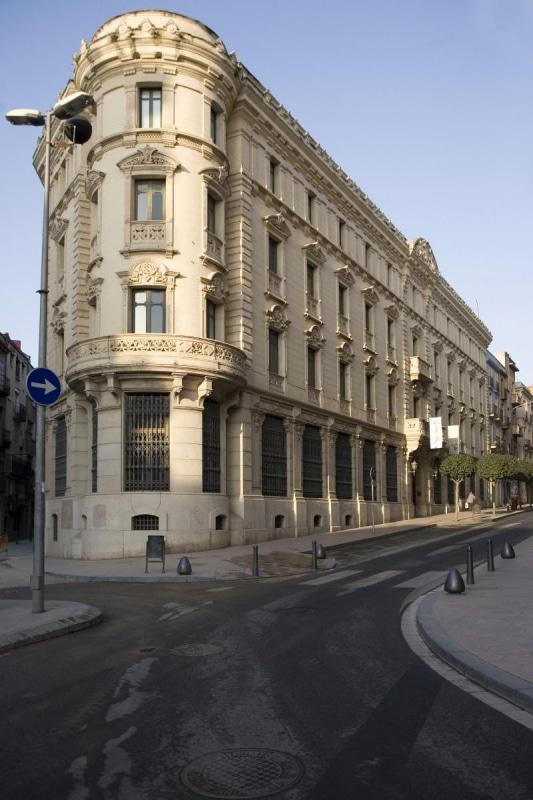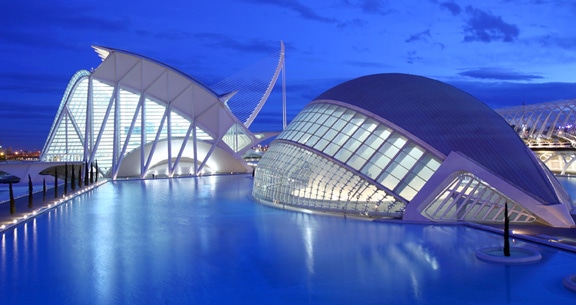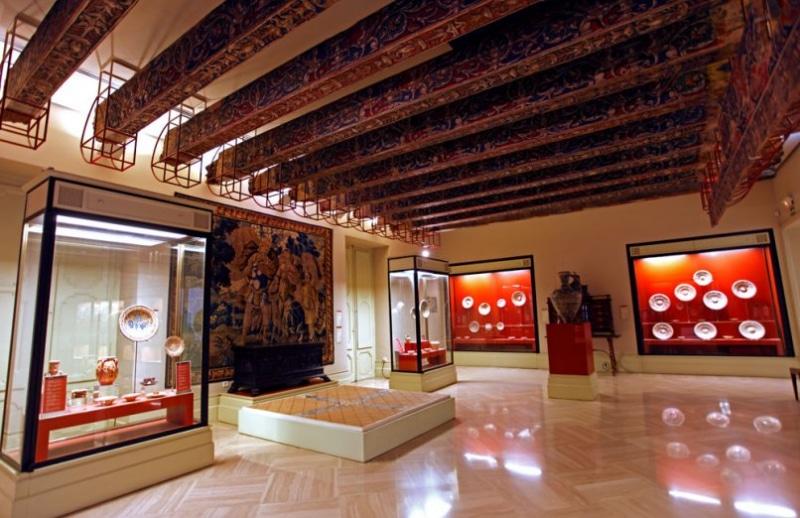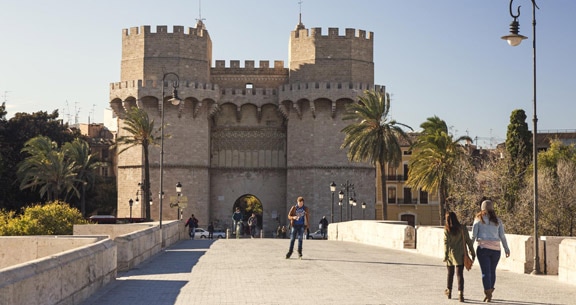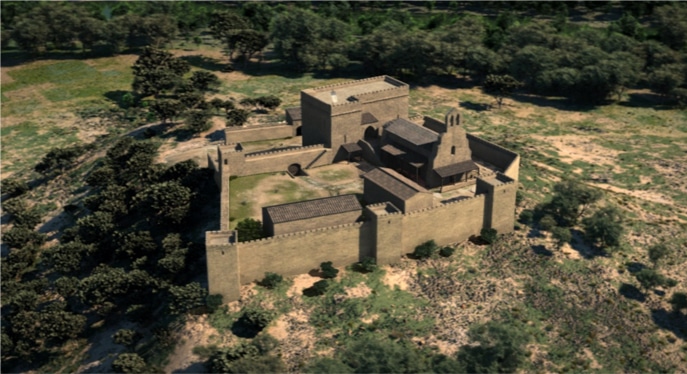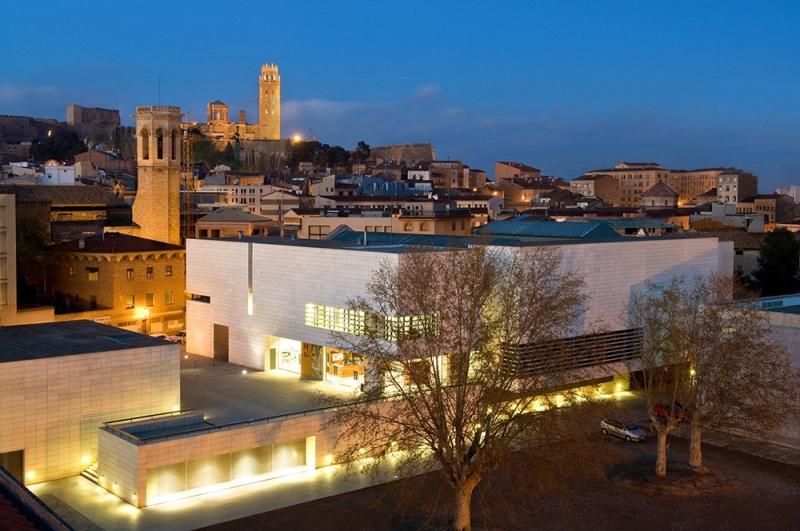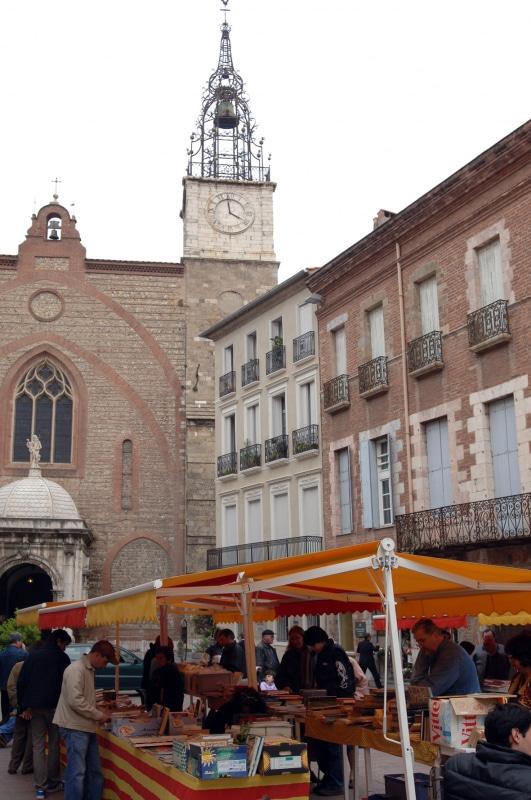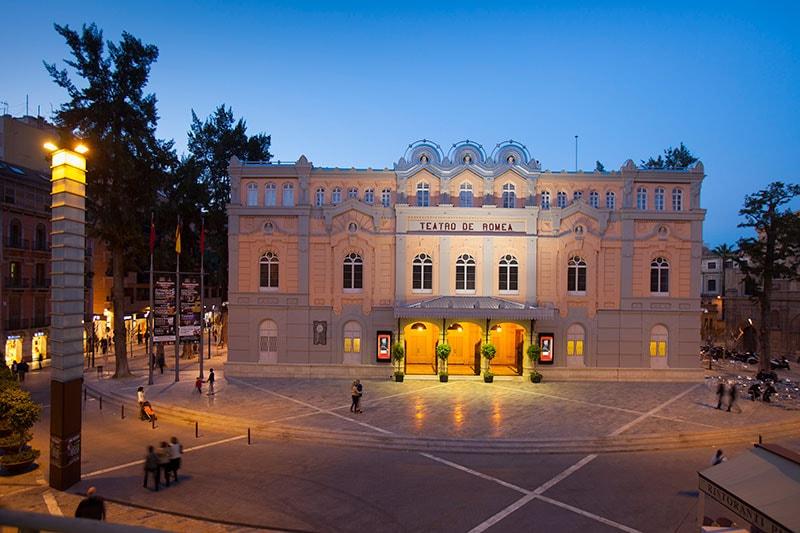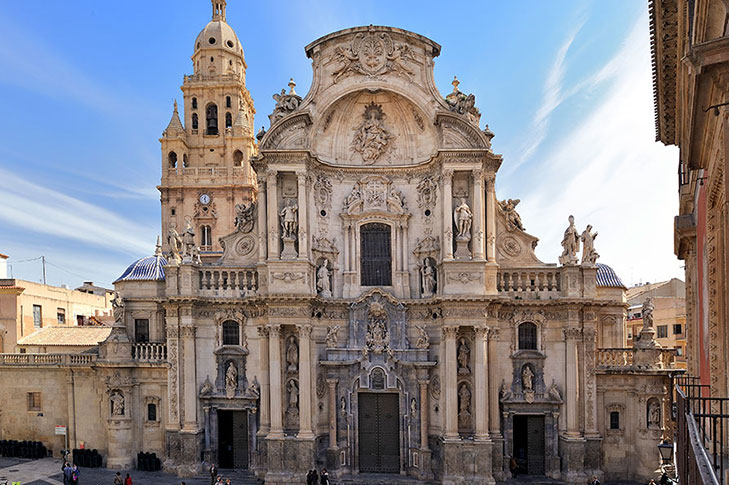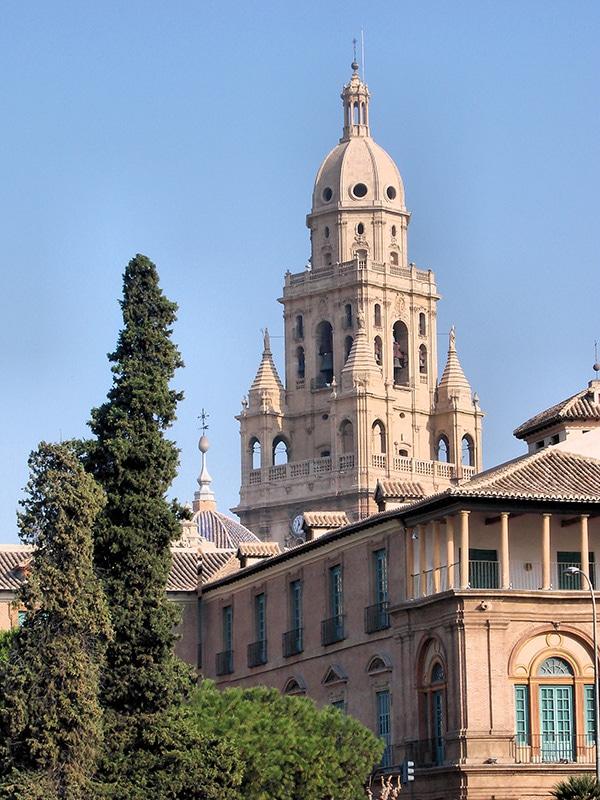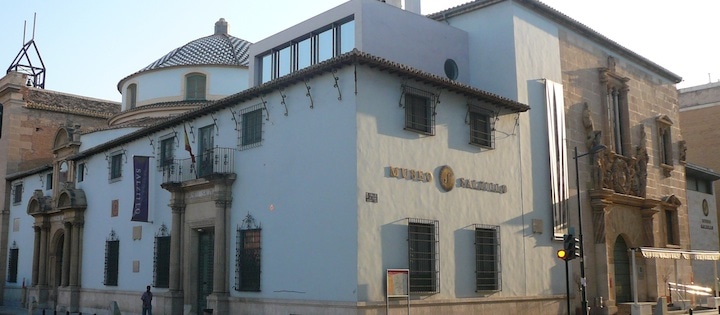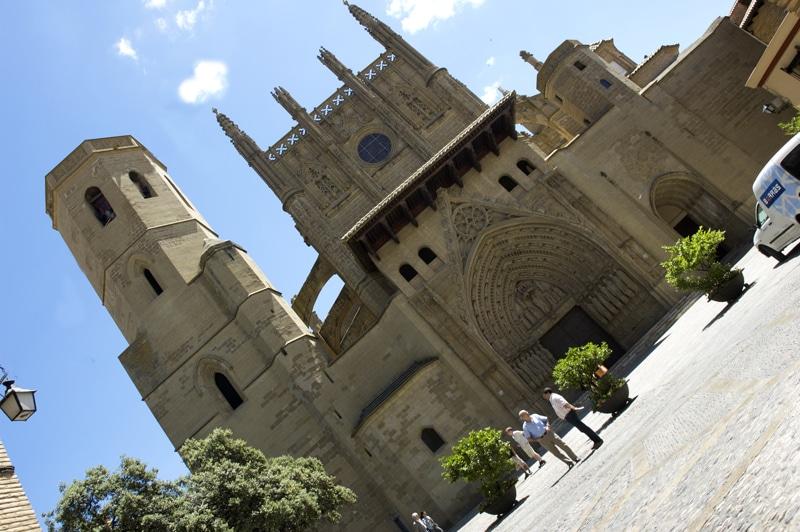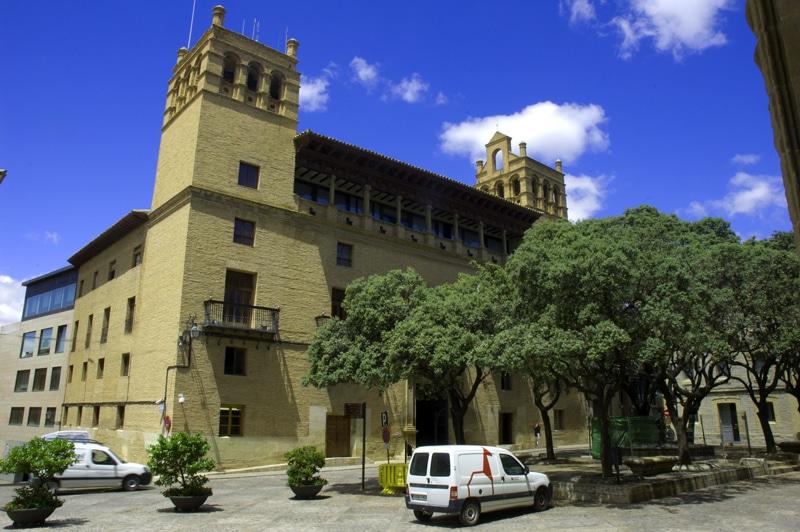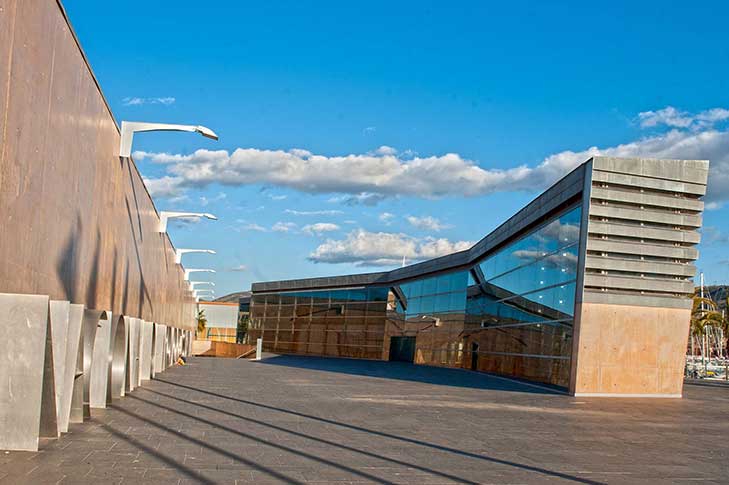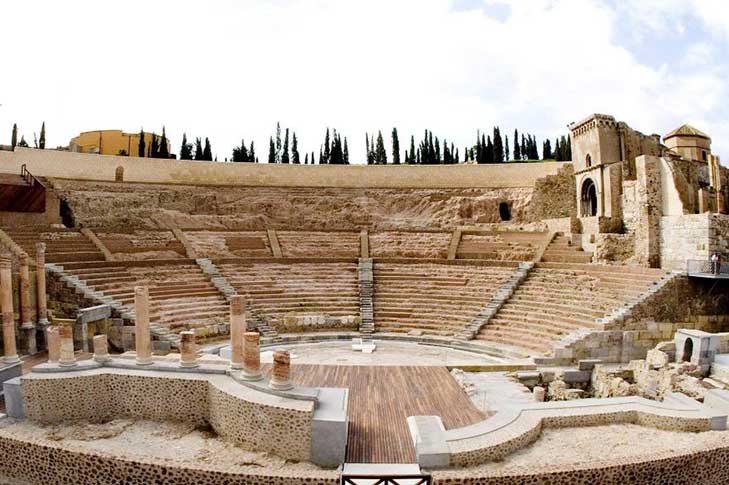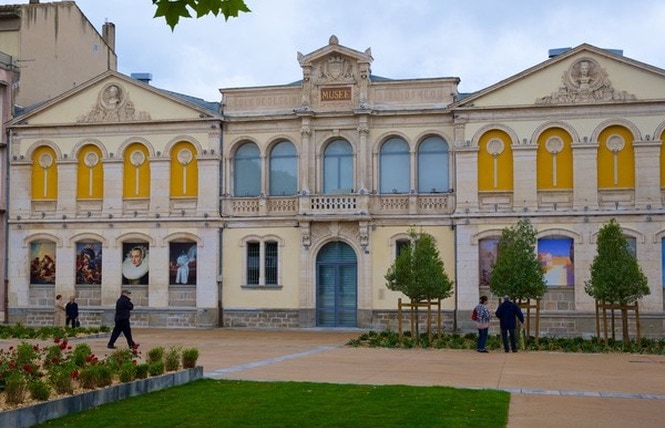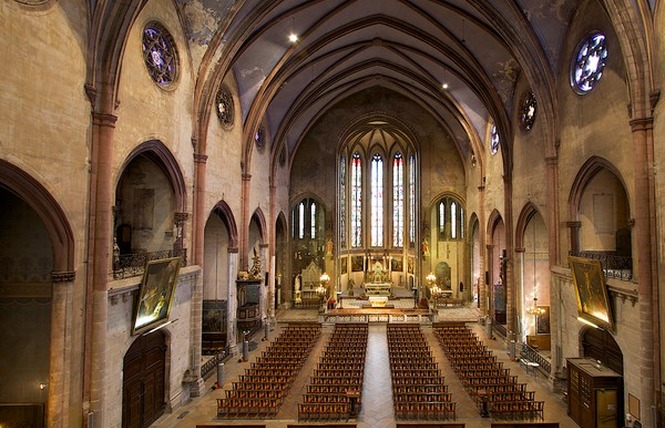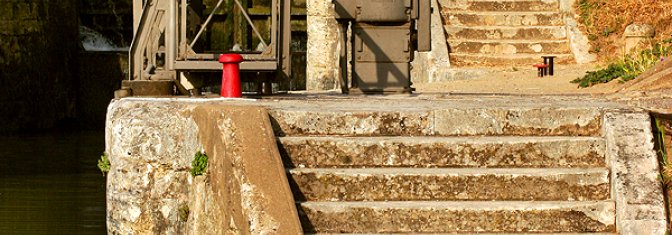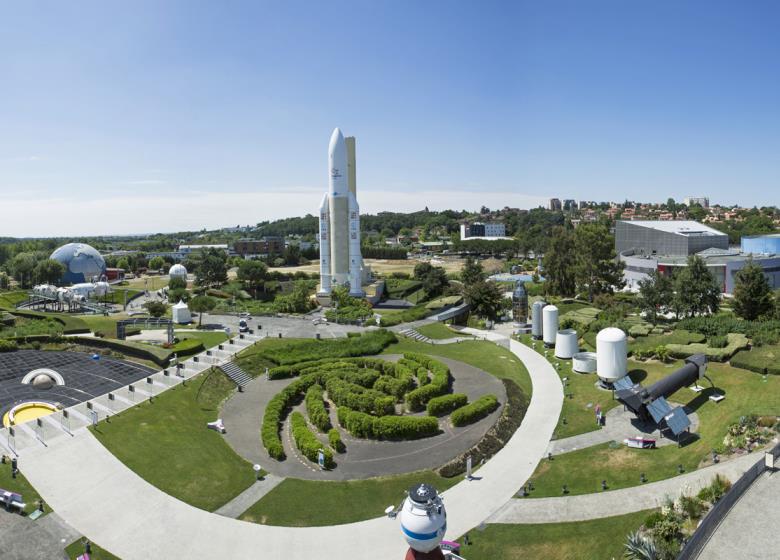Museums, Theaters, Architecture, Palma de Mallorca
Removed from Unnamed collection
La Seu (Majorca Cathedral)
The Cathedral is Majorca's most emblematic monument, as it perfectly synthesises the last eight centuries of its history. The image of a great ship on the sea dominating the bay of Palma with its beauty and presence first surprises visitors before arousing their curiosity and becoming a symbol of the island's historical and spiritual heritage.
Built next to the Mediterranean, the Cathedral leads a monumental ensemble, evoking the cultures that came before the conquest of Madina Mayurqa, on 31 December 1229, by James I, the King of Aragon and Count of Barcelona. James the Conqueror, following the habit of the time, consecrated the old mosque to the Virgin Mary and prepared to build a new church in the style of the era. There is documentary evidence from 1230 relating to the work on the Cathedral. http://www.visitpalma.com/en/contenido/lugares-de-interes/lugarinteres/La-Seu-Majorca-Cathedral/
Removed from Unnamed collection
La Almudaina Royal Palace
La Almudaina Palace was the seat of the independent kingdom of Majorca during the reigns of Jaime I, Sancho I and Jaime II, until it became part of the kingdom of Aragon under Pedro IV. The castle visible today is the result of modifications to the Muslim fortress constructed from 1281. http://www.spain.info/en_IN/que-quieres/arte/monumentos/mallorca/palacio_real_de_la_almudaina.html
Removed from Unnamed collection
Bellver Castle
The castle is located on the crest of a hill and is in the Gothic style. Bellver Castle has had various different uses over the course of its history. King Jaime II ordered its construction as a royal residence. In the 19th century it was converted into a mint. http://www.spain.info/en_IN/que-quieres/arte/monumentos/mallorca/castillo_de_bellver.html
Explore more places related to this search:
Removed from Unnamed collection
Hippy Market
Have you heard about Ibiza's famous Hippy Market? It's one of the island top attractions and a must-see for every holidaymaker. But that's not the only market you can visit, there are many happening all over the island, so wherever you stay you can enjoy a fabulous shopping experience.
Ibiza has strong artistic roots going back to the early '60s when artisans, painters and designers flocked to the island to experience its unique atmosphere, incredible light and freedom of expression. All this comes through in the markets held on the island where handmade items of clothing, jewellery and artefacts can be bought.
The biggest markets are the Punta Arabí Hippy Market on Wednesday in Es Caná and the Las Dalias Hippy Market on Saturday in San Carlos.n. All this comes through in the markets held on the island where handmade items of clothing, jewellery and artefacts can be bought. https://www.ibiza-spotlight.com/shopping/markets_i.htm
Map
Removed from Unnamed collection
Dalt Vila
You're better off on foot, in sensible shoes, exploring the narrow, winding, steep cobbled streets and magnificent views from the breaks in the high ramparts and the vast terraces at each level.
There are three official routes around Dalt Vila, though you can just wander around, get lost and surprise yourself at what you find. The tourist office in Vara de Rey gives out free guides to navigate the warren of streets and there are information plaques sprouting up from the ground all over; these give you, in multiple languages, a chance to learn and do your own guided tour at your leisure, amidst the residents hanging out their washing from their balconies.
A fantastic way to discover the hidden treasures of the old town are the guided tours by Ibiza City Tour - the experienced guides will stimulate your imagination with many anecdotes and interesting facts. https://www.ibiza-spotlight.com/ibiza/daltvila_i.htm
Map
Removed from Unnamed collection
Gothic Quarter
The Gothic Quarter is one of the most famous landmarks in Barcelona. Located in the heart of the old city, this neighborhood features a fusion of buildings dating from Roman times to the 20th century.
The main attribute of the Gothic Quarter is the antique aspect of its buildings, narrow streets and the near absence of traffic. In fact, many areas are for pedestrians only and built like a labyrinth of winding streets and hidden squares. https://barcelonando.com/barri-gotic-gothic-quarter
Map
Removed from Unnamed collection
Palau de la Musica Catalana
El Palau de la Musica Catalana is the most famous concert halls in Barcelona. Squeezed between the narrow streets of La Ribera neighborhood, is one of the most fantastic buildings of the Modernista movement. https://barcelonando.com/palau-de-la-musica-catalana
Map
Removed from Unnamed collection
Casa Amatller
This amazing building, the Casa Amatller by Puig i Cadafalch, a contemporary of Gaudí, which combines the neo-Gothic style with a ridged façade inspired by houses in the Netherlands, is part of the block known as the "mansana de la discòrdia" of Barcelona. http://www.barcelonaturisme.com/wv3/en/page/1197/casa-amatller.html
Map
Removed from Unnamed collection
Casa Batllo
Casa Batllo is one of Barcelona’s biggest landmarks. If buildings could be celebrities, there would be a perpetual red carpet in front of it. The remarkable facade it’s the most prominent feature and it has been subject to many interpretations.
Originally, Gaudí didn’t build Casa Batlló. He was hired to redesign the late 1800’s building in 1904, and the result was one of his most emblematic works in Barcelona along the Sagrada Familia. The building was transformed into one that hardly resembles the original. Animal and nature forms inspired the facade of Casa Batlló. For example, the skull shape of the balconies.
As beautiful as is the outside, you must schedule a visit to the interior to witness the most original and jaw-dropping architecture.
To begin with, a good part of the outside is covered with bits and pieces of broken and multicolored ceramic tiles, a technique called Trencadís, which was used massively by Gaudi in most of his works, visible for example in the Park Güell benches. An interesting effect is created when direct sunlight hits the building, as the tiles shift through different shades of colors along with the stained glass windows. https://barcelonando.com/casa-batllo
Map
Removed from Unnamed collection
Sagrada Familia
The Sagrada Familia is definitely the most famous building in Barcelona. Considered one of Gaudi’s masterpieces, it’s a key attraction in Barcelona and one of the most striking monuments ever built in the world.
In fact, there is absolutely no other building in the world featuring such a genius mixture between Gothic and Art Nouveau styles. Antoni Gaudí took over the project in 1883, a year after construction had begun, and completely reshaped the project to fit his unique style.
Unfortunately, Gaudí died in 1926 when only a quarter of the project had been constructed. Sadly, most of the blueprints left were burned in a fire, therefore, all that’s been built ever since has been a wide interpretation of Gaudi’s architecture.
Stopping over the Sagrada Familia should be top priority if you’re in Barcelona for the first time.
Visiting the basilica it’s an enjoyable experience and a great way to be introduced into Gaudí’s architecture. Besides, it offers the best possible views of the surrounding Eixample District, Barcelona’s own Big Apple. https://barcelonando.com/sagrada-familia
Map
Removed from Unnamed collection
Park Guell
Park Guell is one of the most fantastic designs ever built by Gaudi. A landmark on its own, it features amazing views of Barcelona and plenty of modernist works. Needless to say, as soon you pass the entrance, you’ll notice right away that this isn’t an ordinary park.
Curiously, Park Güell wasn’t originally intended to be a park, but rather a project for luxurious homes. In 1900, the site was just a rocky hill with nothing but vegetation around, in the vicinity of some isolated upper class country houses. The result was one of the most fascinating works by Gaudí.
The intention of the project was to take advantage of the breathtaking views of Barcelona and the clean fresh air, away from the factories, in order to build a top of the line housing complex.
In Park Guell, there are plenty of paths and vegetation to enjoy, but the architectural structures are the glue that holds the whole place together. https://barcelonando.com/parc-guell
Map
Removed from Unnamed collection
Parc Central de Nou Barris
The park covers a surface area of 17 hectares and gives Nou Barris a pleasant, modern appearance in keeping with the residential area where it is located. It blends in perfectly with the site and its undulating landform has a lot of surprises in store. http://www.barcelonaturisme.com/wv3/en/page/524/parc-central-de-nou-barris.html
Map
Removed from Unnamed collection
Museu de Reus Salvador Vilaseca
The museum presents exhibits dating from prehistoric times through to the modern age. http://www.reus.cat/museu-de-reus-salvador-vilaseca
Map
Removed from Unnamed collection
Sant Felix Bell Tower
This Baroque bell tower has an eight-sided floor plan and consists of four different sections, the first three made of stone and the upper one made of fired brick. There are three bells, two of which are liturgical and the third one tells the time; the decoration, executed by the artist, Joan Vila Cinca is particularly beautiful. At the very top of the bell tower, there is an angel that acts as a weathercock and two-time bells.
Inside, you can visit a small exhibition featuring the building, the bells, and the last clock that made them work, built in 1903. And from the top of the bell tower, visitors can have a splendid view of the city and its surroundings. http://www.sabadell.net/Eng/Tourism/p/patrimoniurba_eng.asp
Map
Removed from Unnamed collection
The City of Arts and Sciences
The work of Valencia’s own Santiago Calatrava, this is an example of architecture at its most futuristic. The colossal structure houses an IMAX cinema (situated in the Hemisfèric), as well as Europe’s largest aquarium – the Oceanogràfic, http://www.visitvalencia.com/en/what-to-visit-valencia/must-sees
Map
Removed from Unnamed collection
National Museum of Ceramics
In honour of the Valencian ceramics industry, the González Martí National Museum of Ceramics is located in what is considered to be the best example of Baroque architecture in Spain, the Palacio del Marqués de Dos Aguas. The museum houses the largest national collection of ceramics, dating from the 18th century to the contemporary period, and includes pieces by Picasso. A museum in which you can also find merchandise from the Silk Route and discover how they lived in one of the most iconic Valencian noble families of the age. https://www.visitvalencia.com/en/what-to-do-valencia/valencian-culture/museum-in-valencia/ceramics-museum-marques-dos-aguas-palace
Map
Removed from Unnamed collection
Barrio del Carmen and its Palaces
This thousand-year-old city neighbourhood grew between two walls, the Muslim and the Christian. A walk through its labyrinthine cobbled streets flanked by imposing medieval buildings takes us to back to other times in history. http://www.visitvalencia.com/en/what-to-visit-valencia/must-sees
Map
Removed from Unnamed collection
La Llotja de Lleida
La Llotja is a monolithic construction, subdivided into three functional levels allowing it to serve different purposes.
The central level is the interconnecting core, linking up the various programmes by means of the central stairway/ramp, which also provides illumination. http://www.turismedelleida.cat/viure-a-lleida-en/la-llotja-de-lleida
Map
Removed from Unnamed collection
Templar Castle of Gardeny
With the conquest of the city of Lleida in 1149, the Templars received various properties in compensation for their assistance during the siege, including Gardeny Hill. The earliest reference to the Gardeny Command dates from 1156, the first commander being listed as Brother Pere de Cartellà, a figure who had been actively involved in the city siege. http://www.turismedelleida.cat/viure-a-lleida-en/el-castell-de-gardeny
Map
Removed from Unnamed collection
Lleida Museum
The new home of the Lleida Diocesan and District Museum opened its doors to the public in November 2007, becoming the city's flagship museum. Visitors to its more than 7000 square metres of exhibition space are plunged into the history of Lleida. A story which begins with prehistory and continues up to the modern era. http://www.turismedelleida.cat/viure-a-lleida-en/el-museu-de-lleida
Map
Removed from Unnamed collection
The Sant Jordi
One of the legends attributed to Sant Jordi, which rapidly became the most famous, tells of a dragon who scared the inhabitants of a city. To calm it down, a lamb and a young girl chosen at random had to be offered every day. http://www.perpignantourisme.com/gb/decouvrir/perpignan-catalane/sant-jordi-et-sant-joan#sthash.x611XTzR.dpbs
Map
Removed from Unnamed collection
Museum of Santa Clara
On the Islamic-Mudejar palace of the Emir of Murcia, Ibn Hud, the monastery of Santa Clara was founded, which since 1365 houses the Clarisas nuns. In this building come several centuries of history and different cultures such as Islamic, Gothic and Baroque. The museum space and the nuns coexist in total harmony.
It conserves one of the oldest Arabic pools in Spain. https://www.murciaturistica.es/en/museum/museo-de-santa-clara-102/
Map
Removed from Unnamed collection
Romea Theater
With more than 150 years of history, the eclectic building of the Romea Theater is one of the most important cultural references of the city. Built after an earlier one that suffered two fires, the current theater was inaugurated in 1900 thanks to the architect Justo Millán. https://www.murciaturistica.es/en/monument/teatro-romea-955/
Map
Removed from Unnamed collection
Museum of the Cathedral of Murcia
The most important temple in the Region is a magnificent merge of styles, a catalogue of stone which summarizes more than six centuries of art and history.
Its construction began in 1394 over the remains of an old Arabic mosque and in 1462 its vaults were finished. The oldest entrance is La Puerta de Los Apóstoles (the door of the Apostles). Its only storefront is flanked by pointed archivolts with statues of the apostles on it. La Puerta de las Cadenas( the door of the Chains) dates from 1513 and has original pilasters and archivolts.
From the 15th century dates the Capilla de Los Vélez covered by a ten-pointed star vault and profusely decorated. Another famous chapel is that of Junterón, whose oval ground plan is covered by an extremely original vault.
Its baroque main façade (Imafronte), Jaime Bort¿s work, is an exaltation of Levantine art (the 18th century eastern Spain art). It is divided as an altarpiece into two parts and three vertical sections. The tower, divided into five parts, is 92 meters high. Its construction started in 1511 and the fifth body hosts twenty-five church bells https://www.murciaturistica.es/en/monument/catedral-de-murcia-327/
Map
Removed from Unnamed collection
The Episcopal Palace
This one was demolished to give a much cleaner view to the facade of the Cathedral. Currently the Episcopal Palace occupies a place close to what used to be the Palacio del Alcázar. https://www.murciaturistica.es/en/monument?ficha=329
Map
Removed from Unnamed collection
Salzillo Musuem
The origin of this museum dates back to the 19th century. At that time, the life and work of Francisco Salzillo were soon enveloped by popular legends of romantic taste. https://www.murciaturistica.es/en/museum?ficha=45
Map
Removed from Unnamed collection
The Diocesan Cathedral Museum
This is an old Gothic building which dates back to the 13th and 14th century. Its altarpiece is a superb example of Spanish Renaissance sculpture carved in alabaster by Damián Forment between 1520 and 1533, representing the Passion of Christ. http://www.huescaturismo.com/en/monumental-detalle/7/the-diocesan-cathedral-museum/
Map
Removed from Unnamed collection
Huesca City Hall
This splendid old Aragonese Renaissance palace with imposing towers on either side, a wooden roof and imposing staircase forming a beautiful gallery, dates back to the 16th century.
Inside the Court the old wooden roof and ceiling can be observed which continues into the old Hall of Justice housing the painting by Jose Casado del Alisal, dating back to 1880 and depicting the infamous legend of the Bell of Huesca. To the right of the City Hall is the old Imperial College Santiago, founded in 1534, which was once part of the most prestigious University of Huesca for over three hundred years. http://www.huescaturismo.com/en/monumental-detalle/10/city-hall/
Map
Removed from Unnamed collection
National Museum of Underwater Archaeology
ARQUA Museo Nacional de Arqueología Subacuática is the institution in charge of studying, valuing, investigating, preserving, disseminating and protecting the Spanish underwater cultural heritage. It is also home to the Permanent Observatory for the National Plan for the Protection of Underwater Cultural Heritage.
These tasks are carried out in collaboration with the different regional governments and its research centres and in cooperation with the States who partner with the UNESCO Convention.
Furthermore, the ARQUA has recently taken charge of the Odyssey’s treasure. The Nuestra Señora de las Mercedes frigate collection, which consists of more than 570,000 gold and silver coins from the late 18th century and the beginning of the 19th century. https://www.murciaturistica.es/en/museum/arqua-museo-nacional-de-arqueologia-subacuatica-132/
Map
Removed from Unnamed collection
Roman Theatre
In 1990 the first remains of what would be one of the most interesting monuments of the city of Cartagena were discovered accidentally. It is one of the largest and most comprehensive theatres throughout Spain.
It was built in 44 BC when Octavian Augustus was emperor and Cartagena was a Roman colony (Colonia Urbs Nova Carthago) going through a period of high population and economic development; at that time it was called Carthago Nova. From its location, the theatre has witnessed different periods of the history of Cartagena, since the Roman Empire, up to the present, overlapping constructions of each of the historical periods. The Roman Theatre faithfully followed the theatre model proposed by Vitruvius. It was built almost entirely in the rock on a hill. https://www.murciaturistica.es/en/monument/teatro-romano-349/
Map
Removed from Unnamed collection
Musee Des Beaux Arts
The paintings and ceramics make this museum a splendid panoramic survey of European art from the 17th century to the present day. Educational tours throughout the school year. http://www.tourism-carcassonne.co.uk/detail/007a1d2be4f167c8e8cdfe8407287873/358254
Map
Removed from Unnamed collection
The Midi Canal
The work of Pierre-Paul Riquet carried out in the 17th century to link the Atlantic to the Mediterranean, the Midi Canal has been listed as a UNESCO world heritage since 1996. http://www.tourism-carcassonne.co.uk/detail/007a1d2be4f167c8e8cdfe8407287873/462861
Map
Removed from Unnamed collection
Eglise Saint Vincent Church
A fine example of Languedoc Gothic with a wide nave (20.25 m) and an imposing vault (23,5m). A square-based, 54 m high octagonal tower houses a 47 bell carillon. Public access is free (232 steps), and offers a breathtaking view of the entire town of Carcassonne. http://www.tourism-carcassonne.co.uk/detail/007a1d2be4f167c8e8cdfe8407287873/358021
Map
Removed from Unnamed collection
Canal du Midi
Ranking World Heritage of Humanity by UNESCO December 7, 1996 has given a soul to one of the oldest still operating channels, now dedicated to tourism. Built during the reign of Louis XIV, from 1667 to 1681, called the Royal Canal to the French Revolution, a distance of 240 km. Large 20 to 24 m, 2 m deep on average, there are 69 locks and 350 works spanning his course and facilitate its airworthiness. http://uk.beziers-mediterranee.com/discover/the-canal-du-midi
Map
Removed from Unnamed collection
Boujan-sur-Libron
Probably built on the site of an ancient Roman villa, constant attacks led to the fortification of the village in a circular form. http://uk.beziers-mediterranee.com/beziers-uk/principal-uk/discover/countryside-and-vineyards/boujan-sur-libron
Map
Removed from Unnamed collection
Cite de l'espace
Walking on the moon, stepping aboard the Mir Space Station, gazing at the Ariane 5 rocket, dreaming with your head in the stars… You can do all of this at the Cité de l’Espace, a short hop from the centre of Toulouse.
The Cité offers 2,500m² of interactive exhibitions to help you become an expert on the Earth and the Universe as you learn everything about space flight and even find out how to predict the weather.
You can train like a genuine astronaut thanks to the moonwalk simulator and explore the life of astronauts aboard the International Space Station. Try on a space suit, jump into a lunar rover…
Its 5 hectares of gardens, which are home to life-sized replicas of spacecraft and a giant telescope, its IMAX® cinema with giant screen, its interactive planetarium and countless activities for young and old alike make this journey into outer space even more fun. https://www.toulouse-visit.com/cite-de-l-espace/toulouse/loimid031fs00969
Map



